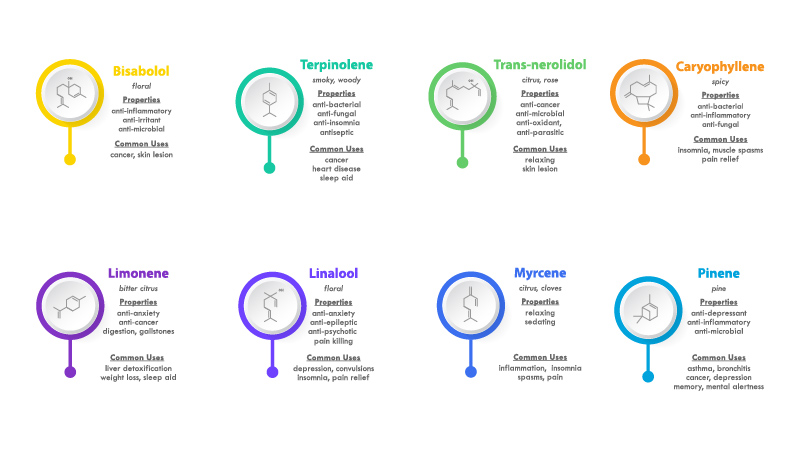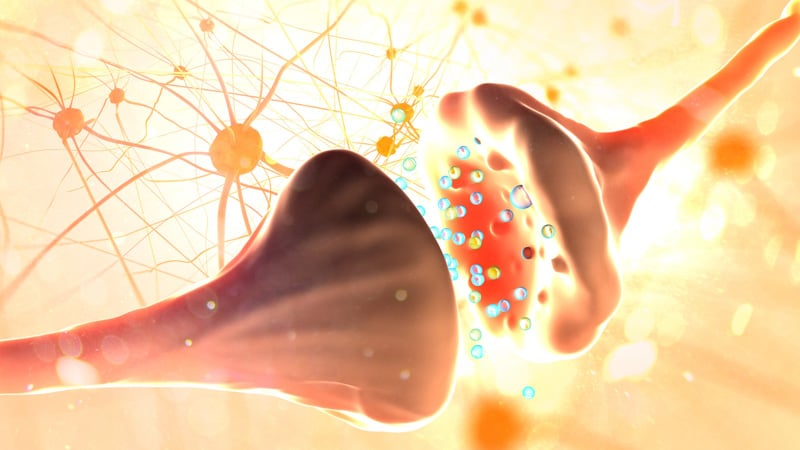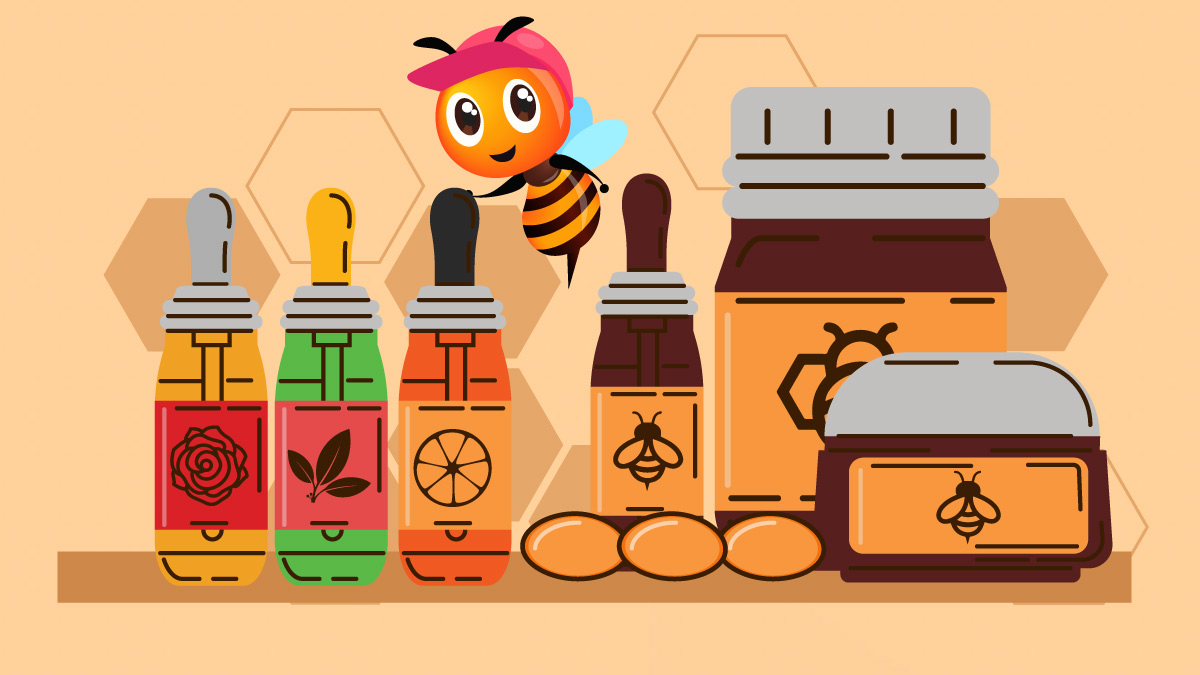You don’t have to use CBD oil to consume terpenes. In fact, you don’t need to know about anything related to cannabis to be familiar with them.
Terpenes are just a fancy name to describe aromatic molecules that we all come in contact with within our everyday lives.
Terpenes are found in plants, including herbs, flowers, fruits, and vegetables. Cannabis plants contain particularly high concentrations of terpenes; they come in a bundle with trace cannabinoids to support the health benefits of THC.
Most of the time, terpenes are suspended in one extract along with CBD; however, sometimes, manufacturers infuse their CBD products with extra terpenes in different ratios to create a broad-spectrum product or boost the efficacy of CBD distillate.
But why are terpenes so important for CBD oil? Why is everybody suddenly talking about aromas and their influence on the effects of cannabis?
Let’s find out!
What Are Terpenes?
There are over 500 chemical compounds in cannabis plants, about 140 of which belong to a broad class of natural chemicals known as terpenes.
Terpenes are volatile aromatic compounds found in all plants, not only in cannabis. They are responsible for how these plants smell and taste. You come across terpenes every time you waft a fruit or vegetable, or when walking around a garden.
There are several hundreds of terpenes in the world, and over 100 have been identified in hemp plants. However, only a few terpenes are concentrated enough to be considered important for our health.
The reason why terpenes have become such a desired ‘product’ in the cannabis industry is the extra health benefits they provide. Researchers have been investigating the effects terpenes have on the human body and brain for quite a while now — concluding there’s some therapeutic potential in them.
Otherwise, terpene has been used in aromatherapy for centuries due to its holistic, natural effects
Are Terpenes the Same As Terpenoids?
When you read about terpenes, you may also stumble upon the term “terpenoids,” which sounds confusingly similar to terpenes.
Are terpenes the same as terpenoids?
The short answer: they aren’t
The long answer: terpenes and terpenoids have a bit different chemical structure. Terpenes are the fresh, living version of terpenoids. When you come across a living cannabis plant, you’ll notice a terpene bouquet secreted in the trichomes (resinous glands) of its flowers. Terpenoids form are when you dry and cure cannabis buds. These two processes change the way these molecules transform.
Terpenoids are commonly infused into different ingredients to create essential oils, perfumes, and spices. They have their sound place outside of cannabis. Studies also suggest that terpenoids play an important role in modulating the effects of cannabinoids such as CBD and THC.
Recent research shows that terpenoids can increase, lower, or change the potency and duration of the effects coming from cannabinoids on top of providing unique smells and flavors to the buds. In other words, the effects of CBD would be bland and its benefits depleted.
Are Terpenes Safe?
Terpenes are organic oily substances that contribute to fragrances and flavors in different products and are generally considered as safe.
As mentioned, terpenes offer an array of positive effects on our health. For example, they can increase dopamine levels and boost norepinephrine activity, positively influencing our mood.
More research is needed to confirm the therapeutic potential of terpenes, but the general consensus is that they don’t have any life-threatening side effects. That being said, some people may be allergic to specific terpenes. Although the molecules don’t induce allergies themselves, they do so on-air exposure, so if you have a runny nose after wafting certain aromas, it may be the sign of an allergy.
Types of Terpenes in CBD Oil: the Terpene Wheel

Terpenes are known for creating the alluring aromas of cannabis plants, but at the same time, they also have complementary effects on CBD. For this reason, people prefer full-spectrum CBD oil over CBD isolate. Full-spectrum extracts reflect the original chemical profile of the plant and are more predictable when it comes to dosage and effects.
Below we cover the most abundant terpenes in CBD oil and their benefits.
Limonene
The name clearly indicates the aromas provided by this terpene. Limonene is typically found in the zest of citrus fruits, such as orange and lemon, but it offers more than just refreshing scents. Limonene has antifungal properties; studies also suggest it can act as an anti-irritant and help people cope with stress. Introducing limonene to CBD oil can boost the absorption rate of other terpenes (1).
Pinene
Pinene is found in pine needles as well as in a few citrus fruits. In traditional Chinese medicine, it is mentioned as an antibacterial, anti-inflammatory, and bronchodilator (2).
Myrcene
Another common terpene abundant in cannabis plants, myrcene has a pungent, earthy, and fruity aroma. Although it’s the smallest terpene, it can make it easier for cannabinoids to penetrate the blood-brain barrier, increasing their potency. Its effects on the body are described as relaxing, leading to feelings of drowsiness. Myrcene has also been mentioned in scientific literature as an antibacterial agent with the ability to reduce physical discomfort (3).
Linalool
Linalool produces a delicate floral aroma and is commonly found in lavender and chamomile. Manufacturers often infuse CBD creams with linalool to achieve an appealing scent, but they also add it to CBD oil to achieve a more calming profile (4).
Caryophyllene
Caryophyllene occurs naturally in black pepper, cloves, cinnamon, and broccoli. It’s one of the most promising terpenes, also called “the dietary cannabinoid” due to its ability to interact with cannabinoid receptors in the similar manner cannabinoids do. Through that mechanism, caryophyllene can ease discomfort and produce anti-inflammatory effects (5).
Bisabolol
Bisabolol is a fragrant terpene that comes with calming effects. It is particularly abundant in chamomile, or a less popular plant, the Candeia tree in Brazil. This terpene is widely used in the beauty industry to produce various skin care products. Now, bisabolol is being examined as one of the contributors to the health benefits of cannabis. Current studies suggest that terpene offers anti-microbial and anti-inflammatory effects (6).
Trans-nerolidol
Trans-nerolidol is another floral terpene underlined by hints of roses, apples, and citrus fruits. It usually occurs in jasmine, tea tree, and lemongrass. Research indicates that it has potent sedative, antifungal, and antiparasitic effects (7).
Terpineol
Terpineol smells similar to lime blossoms, lilacs, and trees; you can find it in many exotic fruits. This terpene is used to infuse perfumes and lotions. Terpineol demonstrates significant anti-oxidative properties (8).
Benefits & Effects of Terpenes in CBD

As you can see, terpenes offer a wider range of health benefits on their own. However, they also modulate the benefits of cannabis, as we’ve already mentioned. Humans have evolved to consume cannabis, and the endocannabinoid system (ECS) is the best proof of that evolution. Both cannabinoids and terpenes from cannabis engage with the cannabinoid receptors in the ECS to help the body return to homeostasis — the state of balance between biological processes that occur in all our systems and organs.
The relationship between cannabinoids and terpenes is known as the entourage effect or the whole-plant synergy.
Let’s shed some light on this phenomenon.
The Entourage Effect in CBD Oil
Scientists have been studying the entourage effect since its introduction in 1998 when Raphael Mechoulam and his colleagues discovered the mutual benefits achieved by combining cannabinoids and terpenes in a botanical extract.
The concept was further investigated and elaborated on by Dr. Ethan Bud Russo, a neurobiologist and cannabis expert who published a study titled “Taming THC: Cannabis Synergy and Phytocannabinoid-Terpenoid Interactions.” (9)
According to the entourage effect, cannabinoids, terpenes, and flavonoids coexist in a unique relationship. When the said compounds occur together in cannabis extracts or dried cannabis flowers, they boost the health benefits of CBD and THC, modulating their signature effects. It’s worth noting that these compounds show lower efficacy when used alone.
However, the entourage effect doesn’t occur only between cannabis and terpenes. For example, CBD is known to counteract the trippy effects caused by higher amounts of THC, which may prove beneficial for people who need high doses of the latter but don’t respond well to its psychoactive properties. On the other hand, THC has been shown to boost the relaxing and anti-inflammatory properties of CBD in animal models, allowing the CBD to avoid a bell-shaped dose-response.
In simple terms, whole buds and full-spectrum extracts are believed to work better than isolate-based products in terms of their health benefits.
Another interesting study on the entourage effect found that cannabis strains with equal or higher ratios of CBD to THC can enhance the positive effects of the plant up to 4 times as much as THC alone (10).
Moreover, the authors concluded that taking twice as much of a THC isolate had no impact on the overall experience except for the fact the high was described as dull and that THC alone could trigger anxiety and paranoia when taken at high doses.
How to Use CBD Terpenes?
/Terpenes should never be consumed on their own because of their potency. They are usually added to distillates or isolates to provide the product with a blend of desired aromas on top of modulating the effects of CBD and other cannabinoids.
Adding terpenes is possible thanks to a process known as fractional distillation. Below we explain how manufacturers infuse terpenes into both CBD oil and CBD vape pen.
Add Terpenes into CBD Oil
Once CBD oil has been extracted with CO2, the final product is a viscous extract containing all naturally occurring compounds in hemp. The extract can be filtered and bottled as is, or it can undergo fractional distillation. As the name suggests, the process separates individual compounds from the extract, transporting them to different chambers so they can be reintroduced to the product.
Manufacturers use fractional distillation for two reasons. First, it helps them control the amount of THC in CBD oil. It may happen that the unprocessed extract will contain more than 0.3% of THC per volume, so fractional distillation allows extractors to infuse precisely the amount of THC they want to achieve. Second, the process can isolate the terpenes before filtration so they don’t get degraded on the way. Once the oil has been filtered, the manufacturer can reintroduce terpenes to the final blend.
CBD Vapes with Terpenes
Infusing CBD vapes with terpenes is easier than doing this with CBD oil; you can actually do it at home. If you have the right vape pen for some experimentation, make sure that you have a high-quality CBD liquid, carrier liquid such as propylene glycol or vegetable glycerin, cutting agent (if necessary), and your favorite terpenes.
Experts recommend only 1% terpene solution to achieve the characteristic flavors and sweetness. Never add the bulky amount of terpenes; otherwise, it will spoil the whole extract. The said 1% is enough to get potent results and the desired flavor. The carrier oil should make the maximum of your solution; the second place is reserved for the CBD extract, and then you can work with the aromas.
Terpenes in CBD Oil: A Little Goes A Long Way
Psychopharmacologists and researchers interested in the effects of cannabis have been exploring the world of terpenes for quite some time now.
It seems terpenes are more than just the bag appeal of your cannabis. In fact, they can significantly influence the effect profile of dried buds and botanical extracts. There’s still a lot we don’t know about terpenes and their qualities, but these fragrant molecules are necessary to understand how cannabis produces its health benefits and why it needs terpenes to grow to its full potential.
What terpenes do you like the most? Are you more into floral notes or do you prefer energizing scents of lemons and pine trees? Share your thoughts in the comments!
References:
- Sun, Jidong. “D-Limonene: safety and clinical applications.” Alternative medicine review: a journal of clinical therapeutic vol. 12,3 (2007): 259-64.
- Salehi, Bahare et al. “Therapeutic Potential of α- and β-Pinene: A Miracle Gift of Nature.” Biomolecules vol. 9,11 738. 14 Nov. 2019, doi:10.3390/biom9110738
- Jansen, C et al. “Myrcene and terpene regulation of TRPV1.” Channels (Austin, Tex.) vol. 13,1 (2019): 344-366. doi:10.1080/19336950.2019.1654347
- Buchbauer, G et al. “Aromatherapy: evidence for sedative effects of the essential oil of lavender after inhalation.” Zeitschrift fur Naturforschung. C, Journal of biosciences vol. 46,11-12 (1991): 1067-72. doi:10.1515/znc-1991-11-1223
- Gertsch, Jürg et al. “Beta-caryophyllene is a dietary cannabinoid.” Proceedings of the National Academy of Sciences of the United States of America vol. 105,26 (2008): 9099-104. doi:10.1073/pnas.0803601105
- Maurya, Anil K et al. “α-(-)-bisabolol reduces pro-inflammatory cytokine production and ameliorates skin inflammation.” Current pharmaceutical biotechnology vol. 15,2 (2014): 173-81. doi:10.2174/1389201015666140528152946
- Silva, Marcos P N et al. “Antischistosomal activity of the terpene nerolidol.” Molecules (Basel, Switzerland) vol. 19,3 3793-803. 24 Mar. 2014, doi:10.3390/molecules19033793
- Zengin, Hatice, and Ayse H Baysal. “Antibacterial and antioxidant activity of essential oil terpenes against pathogenic and spoilage-forming bacteria and cell structure-activity relationships evaluated by SEM microscopy.” Molecules (Basel, Switzerland)vol. 19,11 17773-98. 3 Nov. 2014, doi:10.3390/molecules191117773
